Hyundai IONIQ 5 VS XPeng P7 – Specs, Efficiency & Price Comparison
Which model is the better choice – the Hyundai IONIQ 5 or the XPeng P7? We compare performance (609 HP vs 473 HP), boot capacity (520 L vs 440 L), efficiency (15.60 kWh vs 16.80 kWh), and of course, the price (37600 £ vs 42500 £).
Find out now which car fits your needs better!
The Hyundai IONIQ 5 (SUV) is powered by a Electric engine and comes with a Automatic transmission. In comparison, the XPeng P7 (Sedan) features a Electric engine and a Automatic gearbox.
When it comes to boot capacity, the Hyundai IONIQ 5 offers 520 L, while the XPeng P7 provides 440 L – depending on what matters most to you. If you’re looking for more power, you’ll need to decide whether the 609 HP of the Hyundai IONIQ 5 or the 473 HP of the XPeng P7 suits your needs better.
There are also differences in efficiency: 15.60 kWh vs 16.80 kWh. In terms of price, the Hyundai IONIQ 5 starts at 37600 £, while the XPeng P7 is available from 42500 £.
Compare all the key specs now and find out which model fits your lifestyle best!
Hyundai IONIQ 5
The Hyundai IONIQ 5 showcases a bold and futuristic design that captures attention with its striking facade and sharp lines. This electric vehicle offers an impressive blend of performance and efficiency, making it a compelling choice for environmentally conscious drivers. Inside, the spacious and tech-forward interior provides a comfortable and engaging driving experience for both driver and passengers.
details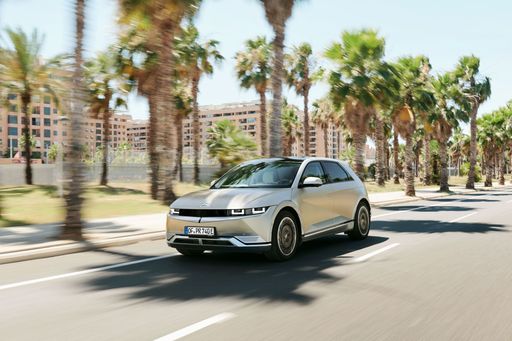 @ hyundai.news
@ hyundai.news
 @ hyundai.news
@ hyundai.news
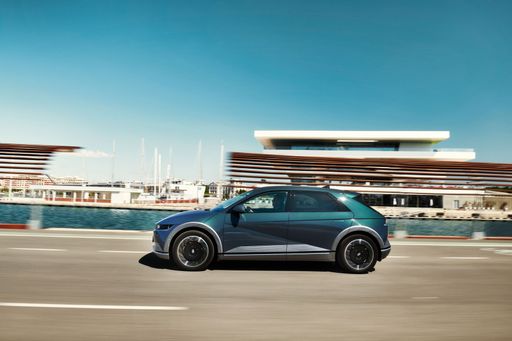 @ hyundai.news
@ hyundai.news
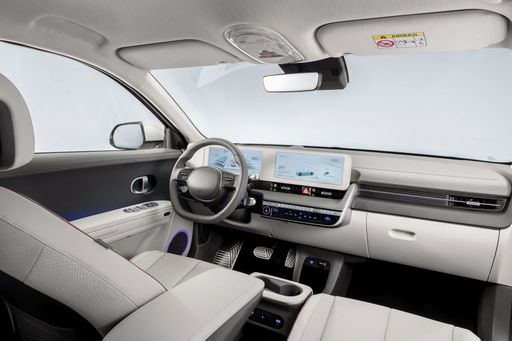 @ hyundai.news
@ hyundai.news
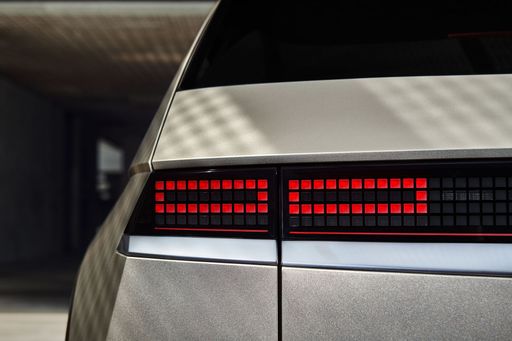 @ hyundai.news
@ hyundai.news
XPeng P7
The XPeng P7 is a sleek and stylish electric saloon that embodies the future of automotive innovation. With its modern design and advanced technology, it offers an impressive driving experience, combining luxury with sustainability. The interior is thoughtfully designed to provide comfort and convenience, making it a strong contender in the competitive market of electric vehicles.
details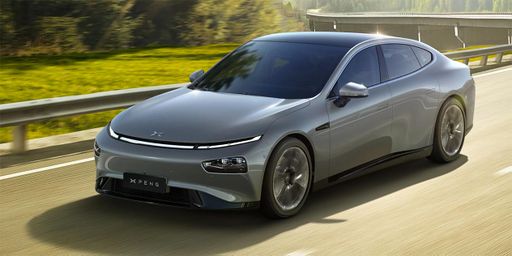 @ XPeng
@ XPeng
 @ XPeng
@ XPeng
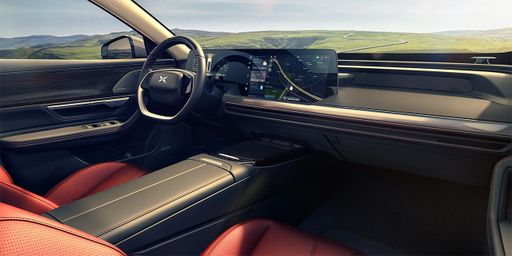 @ XPeng
@ XPeng

|

|
|
|
|
Costs and Consumption |
|
|---|---|
|
Price
37600 - 64200 £
|
Price
42500 - 59700 £
|
|
Consumption L/100km
-
|
Consumption L/100km
-
|
|
Consumption kWh/100km
15.6 - 21.2 kWh
|
Consumption kWh/100km
16.8 - 19.2 kWh
|
|
Electric Range
440 - 570 km
|
Electric Range
505 - 576 km
|
|
Battery Capacity
63 - 84 kWh
|
Battery Capacity
82.70 kWh
|
|
co2
0 g/km
|
co2
0 g/km
|
|
Fuel tank capacity
-
|
Fuel tank capacity
-
|
Dimensions and Body |
|
|---|---|
|
Body Type
SUV
|
Body Type
Sedan
|
|
Seats
5
|
Seats
5
|
|
Doors
5
|
Doors
5
|
|
Curb weight
1955 - 2275 kg
|
Curb weight
2020 - 2180 kg
|
|
Trunk capacity
480 - 520 L
|
Trunk capacity
440 L
|
|
Length
4655 - 4715 mm
|
Length
4888 mm
|
|
Width
1890 - 1940 mm
|
Width
1896 mm
|
|
Height
1585 - 1605 mm
|
Height
1450 mm
|
|
Payload
385 - 530 kg
|
Payload
420 - 430 kg
|
Engine and Performance |
|
|---|---|
|
Engine Type
Electric
|
Engine Type
Electric
|
|
Transmission
Automatic
|
Transmission
Automatic
|
|
Transmission Detail
-
|
Transmission Detail
-
|
|
Drive Type
Rear-Wheel Drive, All-Wheel Drive
|
Drive Type
Rear-Wheel Drive, All-Wheel Drive
|
|
Power HP
170 - 609 HP
|
Power HP
276 - 473 HP
|
|
Acceleration 0-100km/h
3.5 - 8.5 s
|
Acceleration 0-100km/h
4.1 - 6.7 s
|
|
Max Speed
185 - 260 km/h
|
Max Speed
200 km/h
|
|
Torque
350 - 740 Nm
|
Torque
440 - 757 Nm
|
|
Number of Cylinders
-
|
Number of Cylinders
-
|
|
Power kW
125 - 448 kW
|
Power kW
203 - 348 kW
|
|
Engine capacity
-
|
Engine capacity
-
|
General |
|
|---|---|
|
Model Year
2024
|
Model Year
2024
|
|
CO2 Efficiency Class
A
|
CO2 Efficiency Class
A
|
|
Brand
Hyundai
|
Brand
XPeng
|
Hyundai IONIQ 5
Introducing the Hyundai IONIQ 5: A New Era in Electric Mobility
The Hyundai IONIQ 5 is a revolutionary addition to the electric car market, blending futurist aesthetics with ingenious technological features. As part of Hyundai's all-electric lineup, the IONIQ 5 exudes a refreshing approach to sustainable motoring, offering a blend of power, efficiency, and innovation that is set to transform everyday driving.
A Futuristic Design
The IONIQ 5 sets new standards in automotive design with its distinctive silhouette. Its clamshell bonnet and pixelated LED light design form a unique visual signature, evoking a sense of modernity and advancement. Built on Hyundai's Electric-Global Modular Platform (E-GMP), this SUV heralds a new direction for electric vehicles, serving both form and function with a flat floor that maximises interior space.
Performance and Efficiency
The Hyundai IONIQ 5 offers a variety of powertrains to cater to different driving preferences. Depending on the model, power output ranges from 170 PS to a staggering 609 PS, with corresponding torque between 350 Nm and 740 Nm. These configurations enable a brisk acceleration capability, reaching 0-100 km/h in as little as 3.5 seconds.
The car’s battery options of 63 kWh and 84 kWh provide flexibility between range and performance. The efficiency of the IONIQ 5 is admirable, with a consumption ranging from 15.6 to 21.2 kWh/100km, ensuring the capability to travel up to 570 km on a single charge.
Innovative Technology
The IONIQ 5 isn't just about efficient propulsion; it's laden with cutting-edge technology that enhances the driving experience. The vehicle includes an ultra-fast charging capability, able to reclaim 80% of the battery life within just 18 minutes. This is complemented by Vehicle-to-Load (V2L) technology, which turns the IONIQ 5 into a power source to charge devices or even other electric vehicles.
Comfort and Convenience
Inside, the IONIQ 5 continues to impress with a spacious and flexible cabin that maximises comfort and utility. Its minimalist dashboard, dual 12.3-inch screens for infotainment and digital instrument cluster, and extensive use of eco-friendly materials contribute to a serene driving environment.
Safety Meets Innovation
Hyundai has equipped the IONIQ 5 with an array of advanced driver assistance systems. These include features such as Smart Cruise Control, Highway Driving Assist, and Remote Smart Parking Assist, ensuring that safety is paramount without sacrificing convenience.
The Future of Sustainable Driving
With a CO2 efficiency class of A and zero emissions, the Hyundai IONIQ 5 signifies a shift towards more sustainable driving practices. Its blend of technology, performance, and aesthetic appeal positions it as a pivotal player in the electric vehicle market, paving the way for a cleaner, greener future in automotive design.
XPeng P7
Introducing the XPeng P7: A Revolution on Wheels
The XPeng P7 is not just a car; it's a statement. As an electric sports saloon, it combines cutting-edge technology with sleek design, redefining the standards of modern electric vehicles.
Performance That Puts the "Power" in Powertrain
At the heart of the XPeng P7 is a choice between rear-wheel and all-wheel drive systems, delivering phenomenal power of between 276 to 473 PS. With the top performance model accelerating from 0 to 100 km/h in just 4.1 seconds, this is a vehicle built for speed enthusiasts.
Impressive Range and Efficiency
The P7 boasts an electric range between 505 km and 576 km, thanks to its efficient power consumption of 16.8 to 19.2 kWh/100km and a substantial battery capacity of 82.7 kWh. This places it among the most efficient electric vehicles currently available.
Innovations for a Connected Journey
The XPeng P7 is equipped with the latest in automotive technology. Advanced driver-assist systems provide automatic steering and braking, ensuring both safety and comfort on long drives. Furthermore, its intelligent cockpit features a large touchscreen and AI voice interaction, keeping drivers connected and informed at all times.
Design and Comfort: Where Function Meets Form
With its stunning fastback design, the P7 is as attractive as it is aerodynamic. Measuring 4,888 mm in length, 1,896 mm in width, and 1,450 mm in height, this saloon offers ample space for passengers and boasts a generous 440-litre boot, easily accommodating the needs of a family or a business traveller.
Sustainability with Effective Luxury
While offering zero emissions and a CO2 efficiency rating of A, the XPeng P7 doesn't compromise on luxury. Featuring premium materials and finishes, the cabin environment is serene and sophisticated, making every journey a pleasure.
Pricing and Availability
Available with a price range between €49,600 and €69,600, the XPeng P7 provides various configurations that cater to different performance and lifestyle needs, offering a value proposition that few competitors can rival.
Conclusion
The XPeng P7 stands out in the crowded electric vehicle market through its exceptional balance of performance, technology, and design. It's a bold step forward for the brand, setting new standards for what drivers can expect from a modern electric saloon.
The prices and data displayed are estimates based on German list prices and may vary by country. This information is not legally binding.
